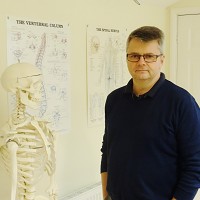
Tissue Repair and Inflammation
When we sustain an injury, whether through a traumatic event or a repetitive strain, the body responds to that event with pain and inflammation. Pain is the first sign that something is not right and it is when we first become aware of a problem. It is caused by pain receptors that weave throughout the body being stimulated by chemicals that are released from the damaged tissues.
These same chemicals also stimulate an inflammatory response which, in turn, gives rise to pain but also swelling and heat. However, it should be considered that inflammation is the natural response to injury and is a vital part of the Healing process.
One of the problems with inflammation is that it is a process that produces pain and, therefore, is regarded as undesirable. However, with many injuries of the muscles, ligaments, tendons and joints inflammation represents the beginning, and a very necessary part, of the tissue repair process. So the aim of intervention is to promote the inflammatory response to promote Healing. Certainly in the first few days after an injury the aim is to limit the inflammatory reaction to contain the area of injury and swelling, and ice applied for short periods can help with this. Taking anti-inflammatory medication initially can also help at this time. However, once the initial acute pain and swelling has eased after a few days the emphasis turns to that of promoting inflammation and not stopping it. This can be done by using a gentle heat or ice for slightly longer periods. Anti-inflammatory medication at this stage is not usually desirable as it ‘slows down’ the rate of inflammation and, therefore, Healing. Keeping the injured part gently mobile is also beneficial.
There are many common conditions that involve an inflammatory component such as Achilles tendonitis, tennis/golfers elbow, sprained ankle, back pain, whiplash and even arthritis. With arthritis, however, the treatment of inflammation is to help with pain relief, and therefore improving function, rather than curing the underlying cartilage wear and tear, but can still be effective.
When assessing a new patient consideration is given to whether the injury is traumatic or repetitive, which structures are involved, the timescale since onset and the influencing factors that may be aggravating the injury, such as lifestyle, work and hobbies. All of these factors will determine the best course of treatment for that particular condition, but the aim being to promote the inflammation where necessary to help promote tissue repair and minimise the timescale of recovery.




